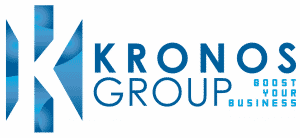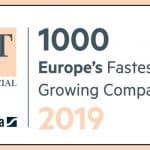How can SMEs deliver added value through cost optimisation and achieve strategic objectives?

Summary
SMEs deliver added value and aim through cost optimisation to achieve strategic objectives which requires balancing innovation, efficiency, and financial prudence.
There are challenges and opportunities in setting strategic objectives for SMEs due to resource constraints and market dynamics. Resource limitations create opportunities for innovative, adaptable strategies, fostering a distinctive organisational culture. Challenges like rapid market changes provide opportunities for SMEs to cultivate agility and responsiveness, enhancing their competitive edge.
SMEs deliver added value through cost optimisation by aligning strategic objectives and providing a roadmap that’s in line with the organisation’s mission, vision, and values, and guiding decision-making and resource allocation. The importance of aligning strategic objectives focuses on broader, long-term aspects, helping SMEs navigate challenges, seize opportunities, and sustainably expand their market presence.
The significance of financial optimisation for SMEs lies in its ability to create a robust financial foundation, enhance operational efficiency, and strategically allocate resources, ultimately supporting the achievement of long-term strategic objectives in a dynamic business environment.
In the dynamic landscape of small and medium-sized enterprises (SMEs), achieving strategic objectives requires crafting balance in innovation, efficiency, and financial prudence.
Strategic objectives for SMEs are overarching, measurable goals that define the desired outcomes and milestones crucial for the success and growth of the business. These objectives are crafted to align with the organisation’s mission, vision, and values, providing a roadmap for decision-making and resource allocation.
Unlike operational goals, strategic objectives focus on the broader, long-term aspects of the business and guide its direction, helping SMEs navigate challenges, seize opportunities, and sustainably expand their market presence.
Strategic objectives serve as a compass, shaping the overall trajectory and aspirations of an SME and ultimately contributing to its sustained growth and success.
What are the challenges and opportunities in setting strategic objectives for SMEs?
SMEs navigating the setting and achievement of strategic objectives face unique challenges stemming from their size and resource constraints. However, these challenges present opportunities for innovation, adaptability, and a focus on building a distinctive organisational culture.
By aligning objectives with the business’s specific characteristics, SMEs can maximise their chances of success, leveraging their agility and responsiveness in a competitive landscape.
Resource constraints
Limited financial and human resources pose a significant challenge for SMEs aspiring to pursue ambitious strategic objectives. In the face of these constraints, there arises a unique opportunity for SMEs to pivot towards resource-efficient strategies. This necessitates a shift in mindset, encouraging creativity and innovation as the driving forces behind achieving more with less.
SMEs leveraging their agility and adaptability, can strategically allocate scarce resources, prioritise high-impact initiatives, and foster a culture of efficiency. Embracing this opportunity not only addresses the challenge of limitations but also positions SMEs to navigate complexities with resilience, turning constraints into catalysts for sustainable growth and success.
Market dynamics
Rapid changes in market trends and evolving customer preferences present a formidable challenge for SMEs in adapting their strategic objectives accordingly. However, within this challenge lies a compelling opportunity for SMEs to cultivate agility and responsiveness. This dynamic environment provides the chance for SMEs to swiftly pivot their strategies, aligning with emerging market dynamics and capitalising on newfound opportunities.
Embracing adaptability as a core competency, SMEs can position themselves to not only navigate the challenges of fluctuating trends but also proactively seize opportunities, ultimately enhancing their competitive edge in the ever-evolving business landscape.
Risk management
The inherent challenge faced by SMEs revolves around heightened risks arising from limited diversification and financial buffers. However, embedded within this challenge lies a significant opportunity for SMEs to cultivate a proactive risk management approach. By emphasising flexibility and the ability to convert challenges into opportunities, SMEs can navigate uncertainties with resilience.
This approach encourages SMEs to carefully assess potential risks, develop strategic contingency plans, and remain adaptable in the face of unforeseen circumstances. Through proactive risk management, SMEs can not only mitigate the challenges associated with their risk profile but also leverage uncertainties as avenues for growth and strategic advancement.
How can SMEs deliver added value through cost optimisation?
Spend optimisation involves adopting strategic measures to enhance operational efficiency, reduce unnecessary expenditures, and maximise overall value.
Efficiency enhancement
Strategy: Streamline operational processes and workflows to eliminate inefficiencies.
Implementation: Embrace technology solutions, automate repetitive tasks, and optimise internal processes to enhance overall efficiency.
Resource allocation
Strategy: Prioritise high-impact projects and allocate resources judiciously.
Implementation: Conduct a comprehensive resource assessment, identify key priorities aligned with strategic objectives, and allocate resources strategically.
Strategic sourcing
Strategy: Explore cost-effective sourcing strategies and negotiate favourable terms with suppliers.
Implementation: Evaluate supplier relationships, negotiate bulk purchasing agreements, and seek strategic partnerships to optimise procurement costs.
Technology integration
Strategy: Leverage cost-effective technology solutions to streamline operations.
Implementation: Adopt cloud-based services, implement affordable software solutions, and explore automation tools to reduce manual workload and enhance efficiency, accuracy and productivity.
Energy and resource efficiency
Strategy: Promote sustainability and resource efficiency to reduce long-term costs.
Implementation: Invest in energy-efficient technologies, implement waste reduction practices, and adopt eco-friendly initiatives to minimise environmental impact and save costs.
Review overhead costs
Strategy: Evaluate and optimise overhead expenses.
Implementation: Scrutinise recurring expenses, renegotiate contracts, and explore opportunities to reduce overhead costs without compromising quality or efficiency.
Workforce management
Strategy: Invest in employee training and development for increased productivity and retention.
Implementation: Provide continuous training, offer career development opportunities, and foster a positive work environment to retain skilled personnel.
Outsourcing non-core functions
Strategy: Consider outsourcing non-core functions to specialised service providers.
Implementation: Assess which functions can be outsourced cost-effectively, allowing the organisation to focus on core competencies and reduce the burden of in-house operations.
Flexible work arrangements
Strategy: Embrace flexible work arrangements to reduce office-related costs.
Implementation: Implement remote work options, hot-desking, or flexible schedules to optimise workspace usage and potentially reduce facility costs.
Continuous improvement culture
Strategy: Foster a culture of continuous improvement to identify and eliminate inefficiencies.
Implementation: Encourage employees to contribute ideas for improvement, implement feedback loops, and regularly assess and adjust operational processes.
Strategic debt management
Strategy: Evaluate and optimise debt structure for cost-effectiveness.
Implementation: Explore options for refinancing loans, negotiating better interest rates, and strategically managing debt to minimise financial burdens.
Customer-centric cost management
Strategy: Align cost management with customer needs and expectations.
Implementation: Focus on cost reductions that do not compromise product or service quality, ensuring that customer satisfaction remains a priority.
The effectiveness of these strategies may vary based on the specific industry, market conditions, and organisational context. Combining several of these approaches and regularly reassessing their impact is key to successful spend optimisation for SMEs.
What is the importance of aligning strategic objectives?
The importance of aligning strategic objectives with the unique characteristics of SMEs is paramount for sustained success.
Right-sizing objectives
Importance: Strategic objectives must be tailored to the size and capacity of the SME.
Outcome: This ensures that objectives are realistic and achievable, preventing overstretching of resources and minimising the risk of failure.
Resource optimisation
Importance: Alignment helps SMEs focus on optimising their available resources effectively.
Outcome: It enables the organisation to make the most of its limited resources, directing efforts toward activities that contribute directly to strategic goals.
Market positioning
Importance: Objectives should align with the SME’s current market position and competitive landscape.
Outcome: Ensures that the business is moving in a direction that capitalises on its strengths, differentiates itself from competitors, and addresses market demands.
Risk mitigation
Importance: Objectives should account for the specific risks faced by SMEs.
Outcome: Facilitates the development of risk mitigation strategies that are realistic and relevant, enhancing the chances of successful goal attainment.
Operational efficiency
Importance: Strategic objectives must align with the SME’s operational capabilities.
Outcome: Promotes efficient execution, preventing resource wastage and ensuring that the business can consistently deliver on its promises.
The alignment of strategic objectives with the unique context of SMEs fosters a holistic and targeted approach, not only safeguarding against common pitfalls but also positioning the business to leverage its strengths, optimise resources, and navigate challenges with precision, ultimately contributing to long-term growth and viability.
What power lies in cost optimisation for SMEs?
Financial optimisation in the context of SMEs is a strategic and dynamic process aimed at enhancing operational efficiency, maximising value and ensuring the judicious allocation of resources. Unlike simple cost-cutting measures, spend optimisation involves a more holistic and proactive approach to managing business finances.
Most often businesses confuse cost optimising with cost-cutting; however, cost or spend optimisation is a strategic and holistic approach to managing expenses within an organisation. Which involves a thorough analysis of various cost elements to enhance overall efficiency, preserve or maximise value, and ensure the effective allocation of resources.
Financial or spend optimisation is not solely focused on reducing costs but aims to achieve a balance between cost reduction and value preservation.
What are some characteristics of financial optimisation?
- Value-centric approach: Spend optimisation emphasises the preservation or enhancement of value while managing expenses. It seeks to align costs with strategic objectives and ensure that every expenditure contributes meaningfully to the organisation’s goals.
- Holistic review: This involves a comprehensive review of various cost components, including operational processes, resource allocation, technology usage, and strategic sourcing. The goal is to identify areas for improvement and efficiency enhancement.
- Strategic decision-making: Financial optimisation goes beyond immediate cost reduction and involves strategic decision-making. It considers the long-term impact of cost management strategies on the organisation’s sustainability, competitiveness, and growth.
- Investment in efficiency: While cost optimising may involve reducing unnecessary expenses, it also encourages investment in technologies, processes, and practices that enhance overall operational efficiency. This can lead to long-term cost savings and value creation.
Cost-cutting is a narrower and more immediate approach focused on reducing expenses without necessarily considering the long-term impact on value or efficiency, which involves across-the-board reductions and can sometimes lead to negative consequences, such as decreased employee morale or compromised product and service quality.
What are some characteristics of cost-cutting?
- Immediate expense reduction: Cost-cutting is primarily concerned with reducing costs in the short term. The emphasis is on achieving quick savings without necessarily considering the broader implications for the organisation’s value proposition.
- Selective reductions: Cost-cutting may involve selective reductions in specific areas, often without a comprehensive analysis of the overall impact on the organisation. This approach can sometimes lead to unintended consequences.
- Risk of value erosion: While cost-cutting aims to reduce expenses, there is a risk of eroding value if the cuts are made indiscriminately. This may impact product or service quality, customer satisfaction, and overall competitiveness.
- Limited strategic considerations: Cost-cutting may lack a strategic perspective, focusing more on reducing immediate costs than on aligning expenses with the organisation’s long-term goals, which can hinder the organisation’s ability to adapt and grow.
What is the significance of spend or financial optimization?
Financial optimisation is significant for SMEs as it goes beyond mere cost-cutting measures. Cost optimisation in the context of SMEs is a multifaceted and strategic approach that goes beyond simple expense reduction. It is a proactive management practice that aims to enhance efficiency, maximise value, and position the business for sustainable growth and success.
- Sustainability: By optimising costs, SMEs ensure the sustainability of their operations in the long run. This involves careful management of financial resources to withstand market fluctuations and economic uncertainties.
- Value maximisation: Optimisation of cost focuses not only on reducing expenditures but also on maximising the value derived from each resource invested. It ensures that every expense contributes meaningfully to the overall objectives and profitability of the SME.
- Agility and adaptability: Embracing spend optimisation cultivates a culture of agility and adaptability within the organisation. SMEs can quickly respond to changes in the business environment, ensuring flexibility in resource allocation and strategic decision-making.
- Competitive edge: SMEs that effectively optimise costs position themselves with a competitive edge. This enables them to offer products or services at competitive prices while maintaining healthy profit margins, enhancing their market positioning.
- Investment in growth: By optimising costs, SMEs free up resources that can be strategically invested in growth initiatives. This may include research and development, marketing efforts, talent acquisition, or exploring new market opportunities.
- Resource allocation for strategic initiatives: By optimising costs, organisations can reallocate resources to key strategic initiatives. This ensures that financial resources are directed toward activities that directly contribute to the accomplishment of long-term goals, such as market expansion, product development, or technology adoption.
- Financial stability: Spend optimisation leads to improved financial stability, creating a solid foundation for the pursuit of strategic objectives. Financial resilience allows organisations to weather economic uncertainties, invest in innovation, and remain agile in the face of industry changes, fostering an environment conducive to strategic success.
- Investment in innovation: When unnecessary costs are reduced, organisations can allocate funds to research and development, innovation, and technological advancements. This supports the strategic objective of staying competitive in the market through the continuous improvement of products, services, and operational processes.
- Competitive pricing and market positioning: Spend optimisation enables organisations to offer competitive pricing without compromising profit margins. This strategic advantage enhances market positioning, contributing to the achievement of objectives related to market share growth, customer acquisition, and overall competitiveness in the industry.
- Operational efficiency and agility: Efficiency gains achieved through spend optimisation result in a more agile and responsive organisation. This agility is essential for adapting to changing market conditions, customer preferences, and industry trends, aligning with strategic objectives that require flexibility and quick responses to emerging opportunities or challenges.
- Financial flexibility for expansion: Financial optimisation provides organisations with the financial flexibility needed for expansion initiatives, whether through geographic expansion, mergers, acquisitions, or partnerships. This aligns with strategic objectives related to market diversification and growth into new segments or regions.
- Risk mitigation and resilience: Financial optimisation involves identifying and mitigating potential risks associated with operational inefficiencies or unnecessary expenditures. This risk mitigation contributes to organisational resilience, ensuring that strategic objectives are pursued with a reduced likelihood of disruptions or setbacks.
- Customer value proposition: Spend optimisation allows organisations to invest in enhancing their customer value proposition. This may include improving product quality, customer service, or overall customer experience. Aligning cost optimisation efforts with the creation of customer value directly supports strategic objectives related to customer satisfaction, retention, and loyalty.
- Measurable impact on key performance indicators (KPIs): Spend optimisation initiatives can be tied to specific key performance indicators (KPIs) relevant to strategic objectives. Regularly monitoring and measuring the impact of optimisation of cost on KPIs provide valuable insights into the effectiveness of cost management efforts in supporting the overall strategic direction of the organisation.
- Long-term sustainability: Financial optimisation contributes to the long-term sustainability of the organisation, ensuring that financial resources are managed prudently. This aligns with strategic objectives focused on building a resilient and enduring business that can withstand market fluctuations and evolve over time.
The role of financial optimisation in delivering added value and achieving strategic objectives
Financial consultants have a wealth of experience in dealing with SMEs, strategic planning, and cost optimisation. Get in touch with a spend optimisation consultant to make your organisation’s strategic approach not only based on short-term gains but also on sustained growth, resilience, and success of SMEs in a rapidly evolving business landscape.




